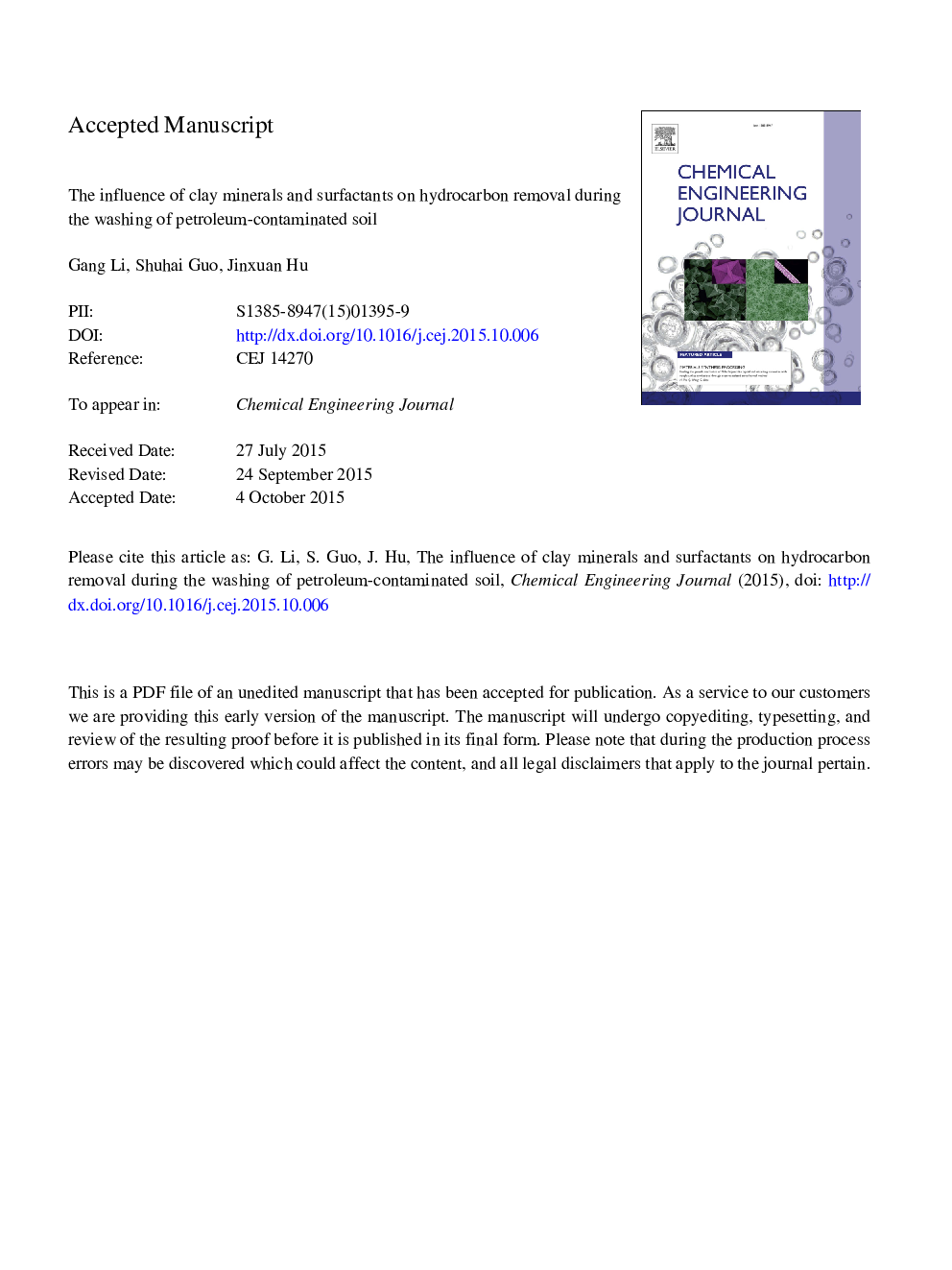| Article ID | Journal | Published Year | Pages | File Type |
|---|---|---|---|---|
| 6582624 | Chemical Engineering Journal | 2016 | 30 Pages |
Abstract
Petroleum-contaminated soil washing experiments were conducted to investigate a novel method for surfactant selection. Particular attention was paid to the effect of surfactant on petroleum removal for individual clay mineral types. Four clay minerals (chlorite, kaolinite, montmorillonite, illite) and three types of surfactant (the nonionic: Tween20, Triton X-100; the cation: CTAB; the anionic: Dodec-MNS, NPS-10) were tested. A variety of hydrocarbon removal rates in the different clays and changes in the ratios of petroleum hydrocarbon groups were observed. The results showed that the highest petroleum removal rate for a single clay was 13.2 ± 0.98% (chlorite), 34.2 ± 1.52% (kaolinite), 68.0 ± 2.84% (montmorillonite) and 86.3 ± 2.25% (illite). Montmorillonite and illite showed higher petroleum washing rate. The anionic surfactant Dodec-MNS achieved better desorption efficiency of petroleum in chlorite, kaolinite and montmorillonite. From the analysis of the four groups, Tween20 took on better desorption capacities for saturated hydrocarbon, but there were no obvious regular results for aromatics, resins and asphaltenes. It was proved that, during the washing of actual soil, the higher the content of kaolinite and illite-montmorillonite mixed-layer minerals, the more petroleum was removed by Dodec-MNS. However, when the content of illite and kaolinite was higher than other minerals, Tween20 achieved better washing. The observed 'determination by composition of clay and petroleum' may be used to regulate the selection of surfactant in washing remediation technology.
Related Topics
Physical Sciences and Engineering
Chemical Engineering
Chemical Engineering (General)
Authors
Gang Li, Shuhai Guo, Jinxuan Hu,
